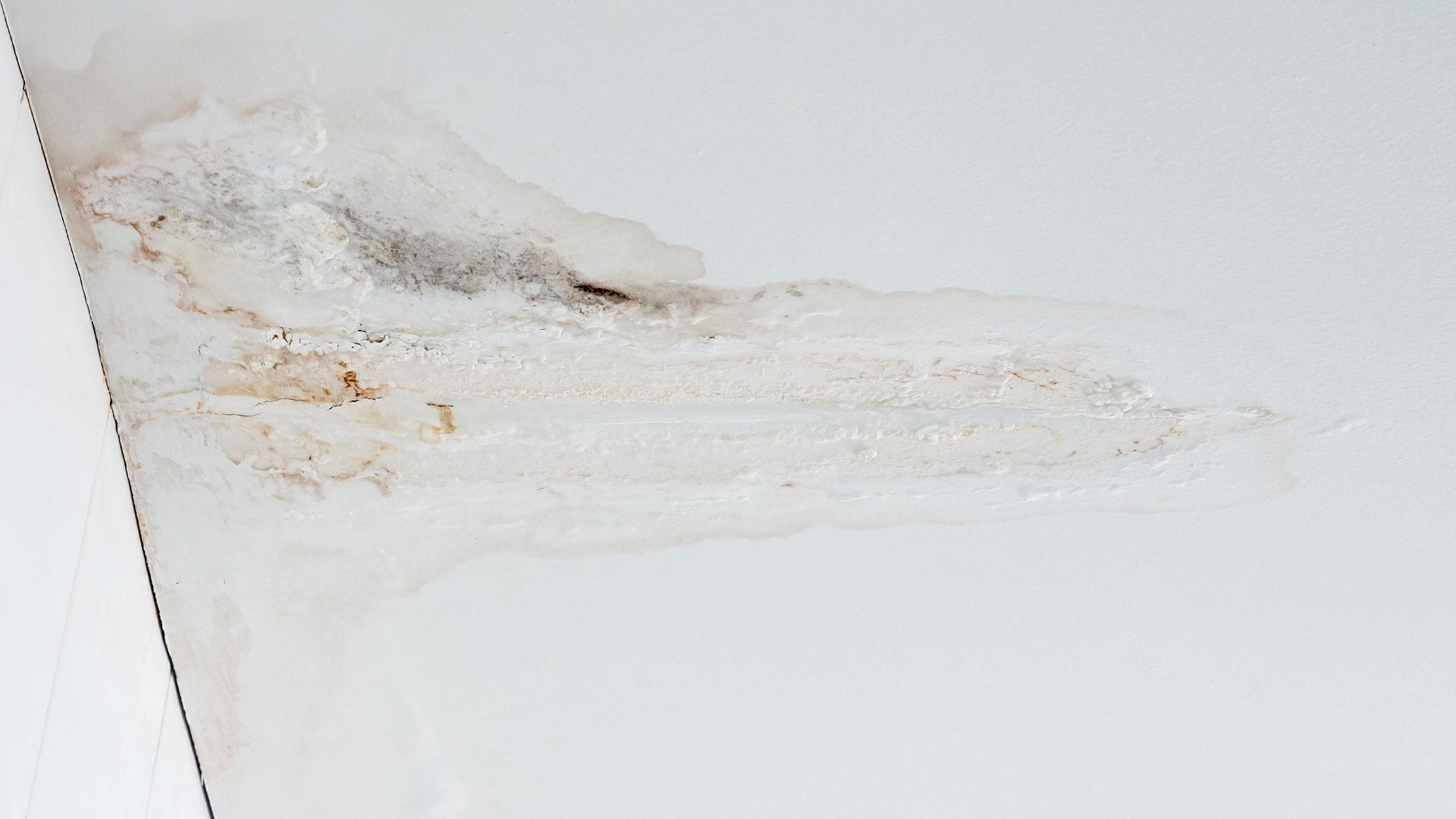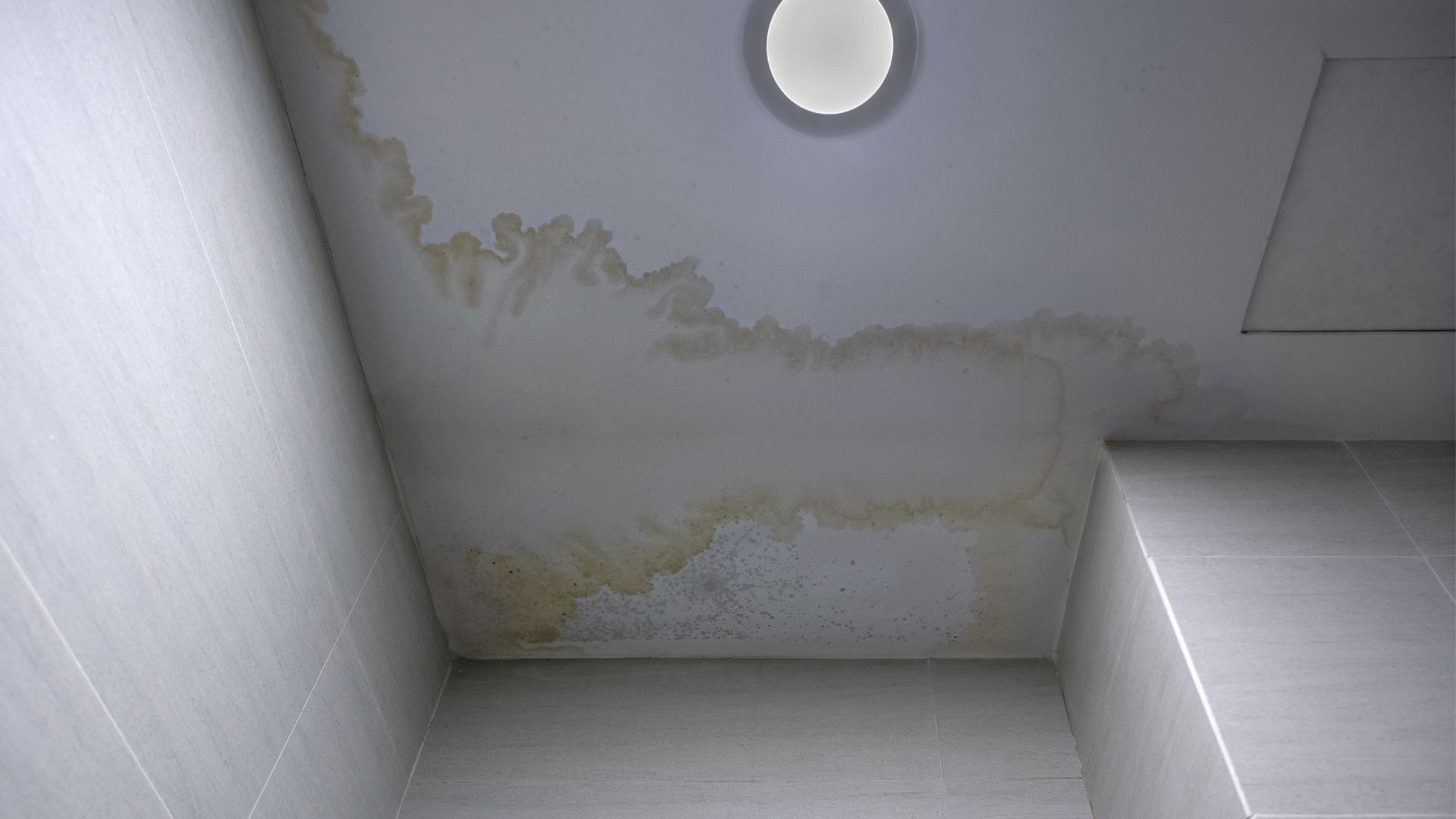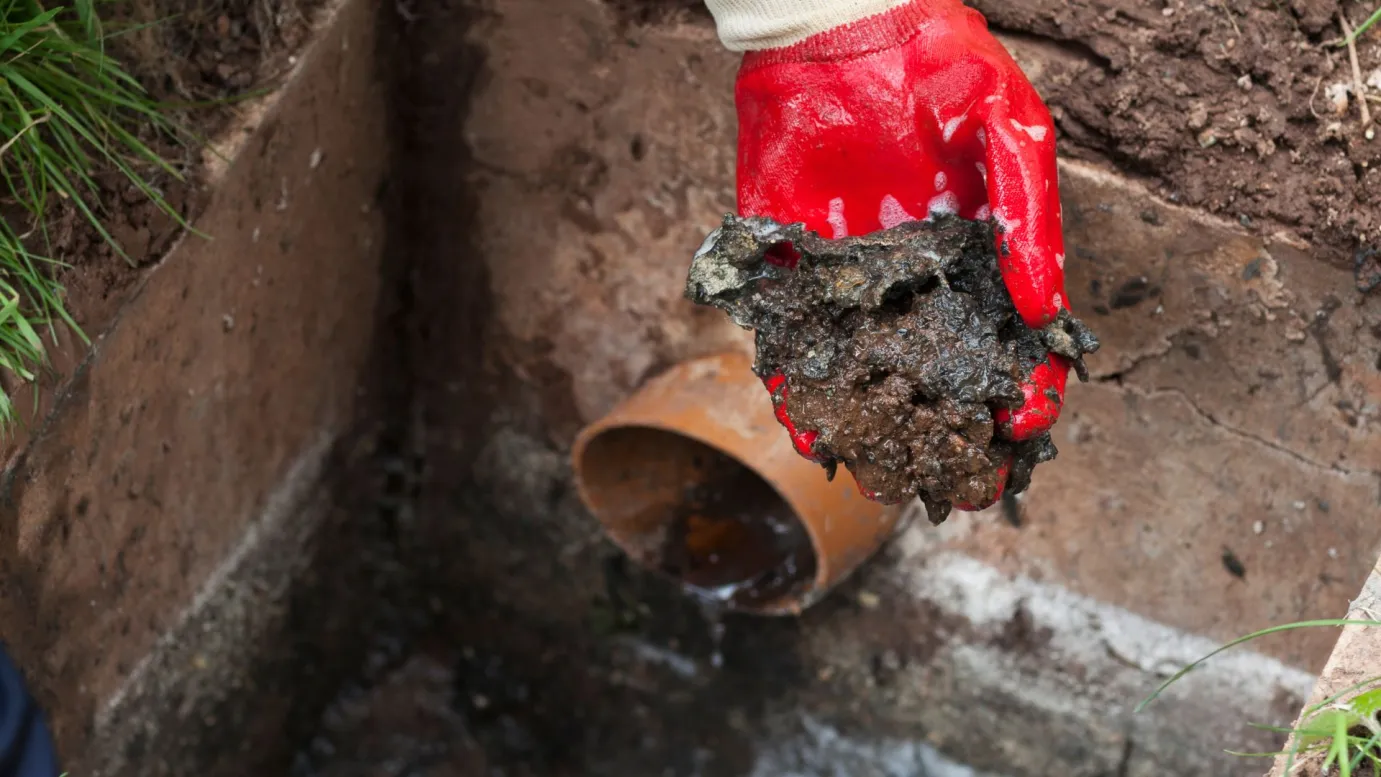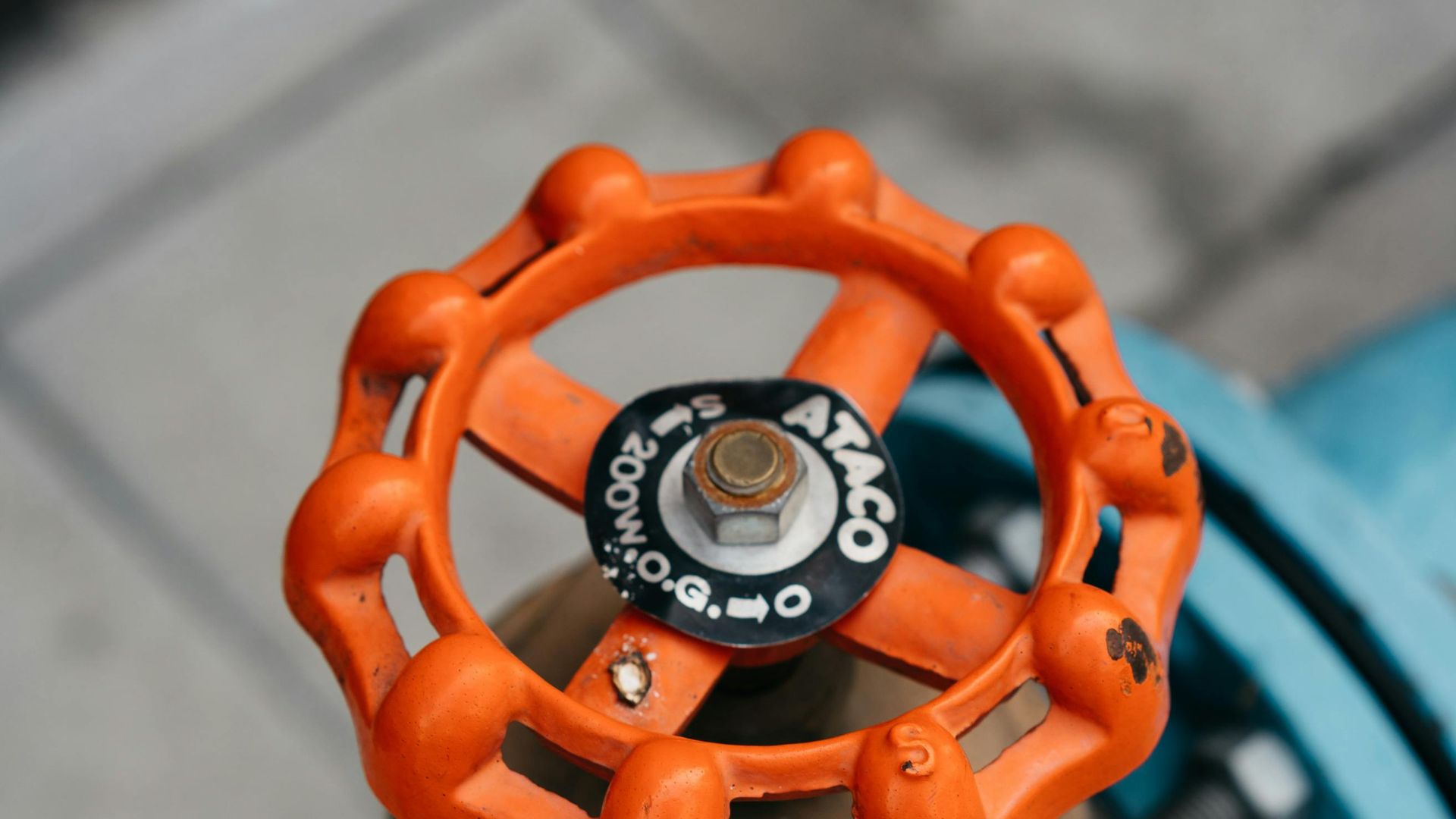Wet weather weighs heavily on Australian homes, with 2 in 5 Australians reporting water leaks during wild storms. That’s not just a hit to your water bill—it could be the reason behind those mysterious water stains creeping across your ceiling or walls.
While it’s easy to dismiss water stains as just an eyesore, they often signal hidden plumbing problems that can lead to structural damage, mould growth, and costly repairs if left unchecked.
In this article, we’ll break down the main causes of water stains caused by leaking pipes, how to recognise early warning signs, and why acting quickly can save you stress and money.
Whether you’ve just spotted a stain or want to stay ahead of issues, understanding what’s really going on behind the walls is the first step to protecting your home. Let’s dive in and make sense of those pesky stains before they become a bigger problem.
What Are Water Stains and Why Do They Matter?

Water stains appear as discoloured patches—typically brown, yellow, or grey—that show up on walls, ceilings, or floors. You might notice rings on the ceiling, blotchy wall streaks, or warped areas where the flooring looks darker than usual.
These marks are more than just cosmetic. They often signal internal leaks or moisture buildup from hidden plumbing issues. The longer they’re ignored, the worse the underlying damage can become.
Mould thrives in damp areas and can lead to health problems, particularly for those with allergies or respiratory issues. Structural components—like timber frames or plasterboard—can also weaken over time. Not to mention, those wall stains and plumbing issues can hurt your property value when it’s time to sell.
Understanding the water damage behind these stains is key. They’re not just a nuisance—they’re a warning sign your home might be trying to tell you something.
Common Causes of Leaking Pipes
Leaking pipes are a headache no one wants, but knowing what causes them can help you stay ahead of the damage.
One of the most common culprits is corrosion, especially in older homes or buildings with copper or galvanised steel pipes. Over time, these materials break down, making small leaks almost inevitable. Faulty joints or worn seals are another cause, especially in homes with aging or poorly installed plumbing.
High water pressure might feel luxurious, but it’s not great for your pipes. Constant pressure strains the system and can lead to cracks or burst fittings.
Tree roots are a major problem outside, particularly in Sydney suburbs, which are lined with mature trees. Roots grow towards underground pipes, eventually breaking into them in search of water.
This is often made worse by shifting soil caused by drought or heavy rains, which are common across many regions of Australia.
Lastly, poor installation or DIY plumbing jobs are a recipe for trouble. Incorrect fittings, mismatched parts, or bad sealing work can lead to plumbing leaks you won’t notice until a stain appears.
If you suspect a problem, it’s smart to call in a professional for pipe repair Sydney-wide before the issue gets worse.
How Leaking Pipes Lead to Water Stains
So, how does a small leak behind the wall end up leaving a stain on your ceiling or floor? It’s all about how moisture moves.
When a pipe leaks behind a wall or ceiling, the water doesn’t just drip straight down—it follows the path of least resistance. It seeps through insulation, timber, and other materials until it reaches a surface it can’t pass through. That’s when the visible water stains appear.
Often, these stains show up far from the actual leak. For instance, water from a bathroom upstairs might show up as a ceiling patch in the hallway below. This is due to gravity and how pipes are positioned throughout the home.
Short-term leaks might only leave slight discolouration, while long-term ones cause larger stains, peeling paint, or even sagging surfaces. Think of it like a slow spill inside your walls—it keeps spreading until it finds a way out.
Because of this sneaky movement, hidden pipe leaks are tricky to locate without help. That’s why early detection is so important—catching the water damage early can save you from a much bigger repair bill.
Identifying the Signs Early
Spotting a leak early is your best chance at avoiding expensive damage. One of the first things to look for is subtle discolouration—yellowing or light brown spots that slowly grow over time.
Peeling wallpaper or bubbling paint can also signal trapped moisture underneath the surface. You might notice musty smells, especially in bathrooms or laundry rooms, even if you can’t see any damage yet. That smell is often your first clue.
Mould patches—small dark spots or fuzzy growth—are a sure sign that moisture has been sitting for a while. Another giveaway is a jump in your water bill without any major change in usage. If the numbers suddenly spike, it’s worth checking your home for signs of leaking.
Pay close attention to rooms with high water use. Laundries, kitchens, and bathrooms are hotspots for hidden issues. Gently press on walls or ceilings—if you find damp or soft areas, it’s time to investigate further.
Learning these leaking pipe signs can help you act before stains appear. Water leak detection isn’t about fancy gadgets—it’s mostly about staying observant and knowing what to look for in the right places.
The Cost of Ignoring the Issue
Putting off plumbing repairs might seem harmless—until the damage multiplies. A tiny leak today could turn into a collapsed ceiling or rotted floor tomorrow.
Water damage causes costly structural issues, especially when left unchecked. Moisture can ruin timber frames, warp flooring, and damage insulation beyond repair. The longer it’s ignored, the more expensive the fix becomes.
Health risks are just as serious. Mould exposure can trigger asthma, allergies, and other respiratory problems, especially in kids or elderly family members.
There’s also the financial risk. Insurance claims are often rejected if the insurer decides the problem was neglected. Add to that the drop in property value when visible damage or bad plumbing history is uncovered.
We’ve seen too many cases where homeowners waited too long. Calling professional plumbers early can prevent small issues from snowballing into massive repairs.
What to Do If You Spot Water Stains

If you see water stains, act quickly. First, turn off your main water supply—if it’s safe to do so—to limit further damage.
Next, take photos of the stain and any nearby damage. This will help with your insurance claim later.
Avoid poking or cutting into the area. You could make things worse or miss the leak entirely.
Instead, contact a licensed plumber. They’ll inspect the problem, locate the source, and provide expert leak pipe repair that Sydney homeowners can trust.
A professional plumber’s team will ensure the leak is fixed properly, not just patched, so you’re not dealing with repeat problems down the line.
Prevention Tips for Future Pipe Leaks
Want to avoid leaks in the first place? Here’s a quick checklist:
- Book regular plumbing inspections to catch early issues.
- Ditch chemical drain cleaners—they can erode your pipes.
- Install a pressure-reducing valve if your water pressure is too high.
- Insulate exposed pipes in cooler areas of your home.
- Watch for leaking pipe signs, like bubbling paint or sudden water bill spikes.
These simple steps can go a long way in preventing plumbing problems. Staying proactive saves you time, money, and the stress of major repairs down the track.
Don’t Let Water Stains Become a Bigger Problem
Water stains are rarely just surface deep. Behind those blotchy marks could be a leaking pipe quietly causing structural damage, mould growth, and thousands in repair costs.
The good news? Catching it early makes all the difference. Whether it’s a discoloured ceiling, peeling paint, or an unexplained spike in your water bill, don’t brush it off. These are your home’s early warning signs—and they’re worth listening to.
If you’ve noticed suspicious stains or suspect a hidden leak, don’t wait for the damage to grow. The expert team at Fixed Today is ready to help with fast, reliable service for leaking pipes across Sydney. Get in touch today!














